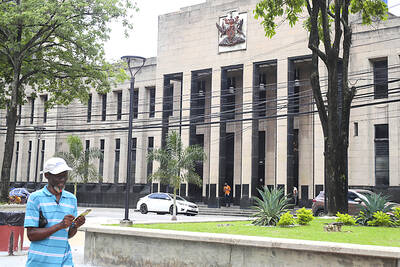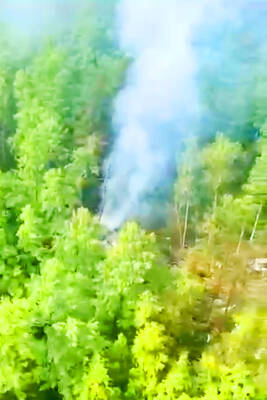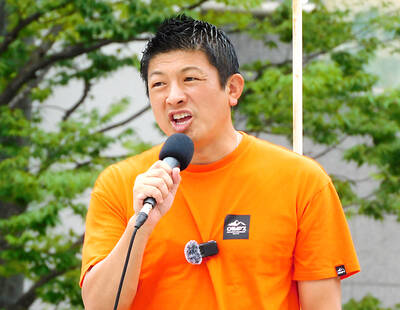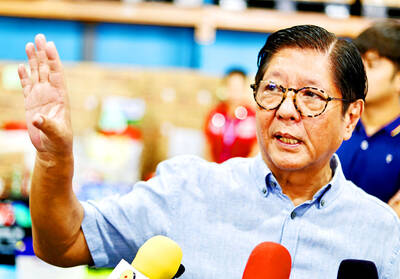The chief UN nuclear inspector said his agency’s Syria probe has been hampered because key satellite images of an alleged nuclear reactor bombed by Israel are inexplicably unavailable on the market.
International Atomic Energy Agency (IAEA) chief Mohamed ElBaradei did not point any fingers on Thursday in the “baffling” failure of his agency’s efforts to obtain the images of the Syrian site immediately after it was bombed by Israel last year.
But diplomats familiar with the IAEA’s Syria investigation said agency officials were considering several scenarios, including the possibility that Syria or other nations with an interest in a cover-up had bought the photos and all rights to them from commercial satellite companies.
ElBaradei’s comments at the start of a two-day full meeting of the IAEA’s 35-nation board partially reflected the focus of the gathering — suspicions about Syria and Iran’s nuclear activities.
On Iran, ElBaradei told the meeting that he “cannot exclude the existence of possible military dimensions to Iran’s nuclear program.”
The US and the EU both expressed alarm at Tehran’s defiance of UN Security Council resolutions meant to curb its suspected nuclear activities. Ali Ashgar Soltanieh, Iran’s IAEA representative, accused Washington and its allies of dragging it before the Security Council as part of a “hidden agenda.”
In the case of Syria, ElBaradei said his “agency was unable to obtain commercial satellite imagery” of the site immediately after the bombing, adding: “It is regrettable, and indeed baffling, that imagery for this critical period ... was not available.”
Syrian nuclear chief Ibrahim Othman was dismissive, telling The Associated Press: “The theory that we bought all the photos is nonsense.”
The IAEA often turns to commercial images beyond any spy satellite photos shared by governments.
But the two nations most likely to have satellite intelligence were unlikely to have provided it with immediate information. Israel still has not confirmed it was behind the strike, while the US waited for more than six months before sharing knowledge with the IAEA.
The possibility that commercial companies simply did not know where to look immediately after the bombing was raised by David Albright, whose Washington-based Institute for Science and International Security closely tracks suspected secret proliferators.
“The United States and Israel went to great lengths to prevent others from finding out where the site was,” said Albright, whose institute was the first to publish commercial satellite images of the site more than a year ago and identify it as a likely North Korean-model nuclear reactor.
“No one knew where the site was immediately after the bombing,” said Albright, whose institute published photos taken nearly a month before the Israeli strike on Sept. 6 last year.
Albright also said that ElBaradei was initially skeptical of the US assertions, which could have led Washington and Israel to withhold satellite photos.
“Why would US intelligence give photos to ElBaradei if he was predisposed not to believe” that they showed a secret nuclear reactor, Albright said in an interview.
Meanwhile, a senior diplomat familiar with the Syria probe suggested that the comments by ElBaradei were at least partially out of date. He said the agency had “very recently” been able to locate commercial images showing the site after the Israeli strike.
IAEA spokeswoman Melissa Fleming said the agency would not comment on the issue.
All of the diplomats asked for anonymity in exchange for speaking to The Associated Press because their information was privileged.

Trinidad and Tobago declared a new state of emergency on Friday after authorities accused a criminal network operating in prisons across the country of plotting to kill key government officials and attack public institutions. It is the second state of emergency to be declared in the twin-island republic in a matter of months. In December last year, authorities took similar action, citing concerns about gang violence. That state of emergency lasted until mid-April. Police said that smuggled cellphones enabled those involved in the plot to exchange encrypted messages. Months of intelligence gathering led investigators to believe the targets included senior police officers,

FOREST SITE: A rescue helicopter spotted the burning fuselage of the plane in a forested area, with rescue personnel saying they saw no evidence of survivors A passenger plane carrying nearly 50 people crashed yesterday in a remote spot in Russia’s far eastern region of Amur, with no immediate signs of survivors, authorities said. The aircraft, a twin-propeller Antonov-24 operated by Angara Airlines, was headed to the town of Tynda from the city of Blagoveshchensk when it disappeared from radar at about 1pm. A rescue helicopter later spotted the burning fuselage of the plane on a forested mountain slope about 16km from Tynda. Videos published by Russian investigators showed what appeared to be columns of smoke billowing from the wreckage of the plane in a dense, forested area. Rescuers in

A disillusioned Japanese electorate feeling the economic pinch goes to the polls today, as a right-wing party promoting a “Japanese first” agenda gains popularity, with fears over foreigners becoming a major election issue. Birthed on YouTube during the COVID-19 pandemic, spreading conspiracy theories about vaccinations and a cabal of global elites, the Sanseito Party has widened its appeal ahead of today’s upper house vote — railing against immigration and dragging rhetoric that was once confined to Japan’s political fringes into the mainstream. Polls show the party might only secure 10 to 15 of the 125 seats up for grabs, but it is

Philippine President Ferdinand Marcos Jr is to meet US President Donald Trump this week, hoping Manila’s status as a key Asian ally would secure a more favorable trade deal before the deadline on Friday next week. Marcos would be the first Southeast Asian leader to meet Trump in his second term. Trump has already struck trade deals with two of Manila’s regional partners, Vietnam and Indonesia, driving tough bargains in trade talks even with close allies that Washington needs to keep onside in its strategic rivalry with China. “I expect our discussions to focus on security and defense, of course, but also